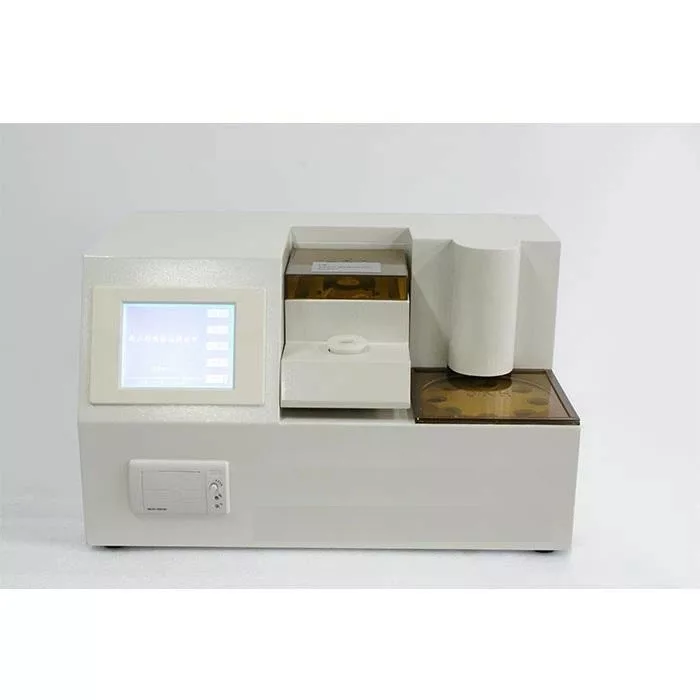Mastering Fluid Quality: The Essential Guide to Oil Acidity Analysis Devices KAA/O/30
In industries such as automotive, energy, and manufacturing, maintaining the quality of lubricating oils, fuels, and other fluids is crucial for operational efficiency and equipment longevity. One of the key indicators of oil quality is its acidity level, which can affect performance, lead to corrosion, and ultimately damage machinery. The Oil Acidity Analysis Devices KAA/O/30 is a specialized tool designed to measure the acid number (AN) or total acid number (TAN) in oils and other fluids, providing vital data for maintaining optimal fluid conditions. In this comprehensive guide, we’ll explore the features, benefits, and applications of oil acidity analysis devices, and why they are indispensable for fluid management.
What is an Oil Acidity Analysis Device?
An Oil Acidity Analysis Device is a precision instrument used to measure the acidity in oils, including lubricants, hydraulic fluids, transformer oils, and fuels. The acidity level, typically expressed as the acid number (AN) or total acid number (TAN), indicates the concentration of acidic compounds within the oil. High acidity can result in corrosion, sludge formation, and reduced lubrication efficiency, leading to increased wear and tear on machinery. The Oil Acidity Analysis Device provides accurate measurements that help in monitoring and maintaining the quality of oils, ensuring they remain within safe operating parameters.
Key Features of OAAD
- High Sensitivity and Accuracy: These devices are engineered to detect even trace amounts of acidic compounds in oils, providing precise and reliable measurements that are critical for monitoring oil quality.
- User-Friendly Interface: Many Oil Acidity Analysis Devices feature intuitive interfaces with digital displays, making them easy to use for both experienced professionals and those new to oil analysis.
- Rapid Testing Capabilities: Designed for efficiency, these devices deliver fast results, allowing for immediate assessment of oil acidity levels. This rapid testing is essential for timely decision-making in industrial settings.
- Portability and Durability: Portable models are available for on-site testing, featuring robust construction that withstands harsh industrial environments. This portability ensures that oil acidity can be monitored in the field as well as in the laboratory.
- Automated Analysis: Advanced models offer automated titration and analysis processes, minimizing human error and ensuring consistent results across multiple tests.
- Data Logging and Connectivity: Modern devices often include data logging capabilities and connectivity options, allowing for easy data storage, analysis, and integration with other monitoring systems.
Benefits of Using an Oil Acidity Analysis
- Enhanced Equipment Longevity: By regularly monitoring the acidity of oils, you can prevent corrosive damage to machinery, reducing maintenance costs and extending equipment life.
- Improved Operational Efficiency: Accurate acidity measurements help maintain optimal oil conditions, ensuring that machinery operates smoothly and efficiently without the risk of breakdowns due to poor lubrication.
- Preventive Maintenance: Regular acidity analysis enables early detection of oil degradation, allowing for timely intervention before significant damage occurs. This proactive approach helps avoid costly repairs and downtime.
- Compliance with Industry Standards: Many industries have strict guidelines regarding the quality and condition of oils. Using an Oil Acidity Analysis Device helps ensure that your operations comply with these standards, avoiding penalties and maintaining certification.
- Cost Savings: By preventing equipment failure and reducing the need for frequent oil changes, acidity analysis contributes to significant cost savings over time. It also helps optimize oil use, ensuring that oils are replaced only when necessary.
- Versatility Across Applications: These devices can be used in a wide range of industries and applications, from automotive and aerospace to power generation and manufacturing, making them valuable tools for various operational needs.
Applications of Oil Acidity Analysis
- Automotive and Transportation: In the automotive industry, maintaining the quality of engine oils, transmission fluids, and lubricants is crucial for vehicle performance. Oil Acidity Analysis Devices are used to monitor the condition of these fluids, ensuring they remain effective and preventing engine damage.
- Power Generation: In power plants, transformer oils and other insulating fluids must be kept within specific acidity levels to prevent corrosion and ensure efficient operation. Acidity analysis is essential for maintaining the reliability of power generation equipment.
- Manufacturing and Industrial Machinery: In manufacturing, where machinery is heavily reliant on lubricants and hydraulic fluids, regular acidity analysis helps maintain optimal operating conditions and prevent costly downtime due to fluid-related issues.
- Oil and Gas Industry: The oil and gas industry uses these devices to monitor the quality of crude oil, refining products, and other petrochemical fluids. Accurate acidity measurements are critical for ensuring the integrity of pipelines, storage tanks, and processing equipment.
- Aerospace and Aviation: In aviation, the quality of hydraulic fluids and lubricants is paramount for safety. Oil Acidity Analysis Devices help maintain the condition of these fluids, ensuring the reliable performance of aircraft systems.
- Marine and Offshore Operations: Marine vessels and offshore platforms rely on the quality of oils and lubricants for smooth operations. Acidity analysis devices are used to monitor these fluids, helping to prevent corrosion and mechanical failures in harsh marine environments.
How to Choose the Right Oil Acidity Analysis Device
When selecting an Oil Acidity Analysis Device, consider the specific needs of your industry and applications. Key factors to evaluate include the device’s sensitivity, accuracy, ease of use, testing speed, and durability. It’s also important to ensure that the device you choose is compatible with the types of oils you’ll be analyzing and that it meets any relevant industry standards or regulations.
Conclusion
The Oil Acidity Analysis Device is an essential tool for anyone responsible for maintaining the quality and performance of oils in industrial, automotive, and energy applications. By providing accurate and timely acidity measurements, these devices play a crucial role in preventing equipment damage, reducing maintenance costs, and ensuring operational efficiency. Whether you’re managing a fleet of vehicles, operating a power plant, or running a manufacturing facility, investing in a high-quality Oil Acidity Analysis Device will help you maintain optimal fluid conditions and safeguard your equipment.
For expert advice on selecting the ideal Oil Acidity Analysis Device for your needs, contact our team today.





Reviews
There are no reviews yet.